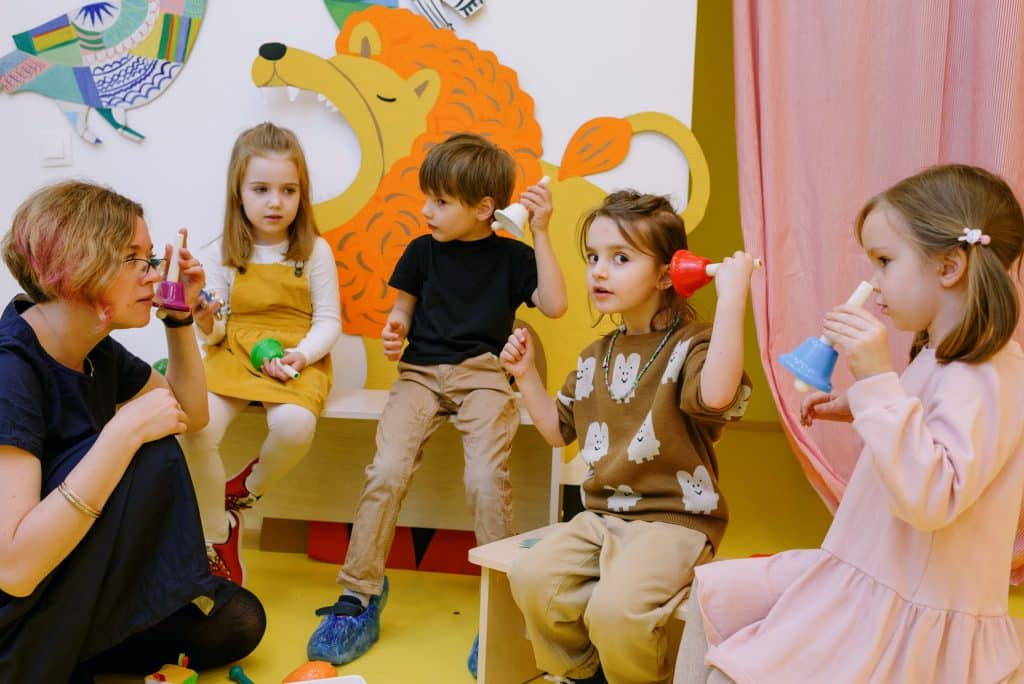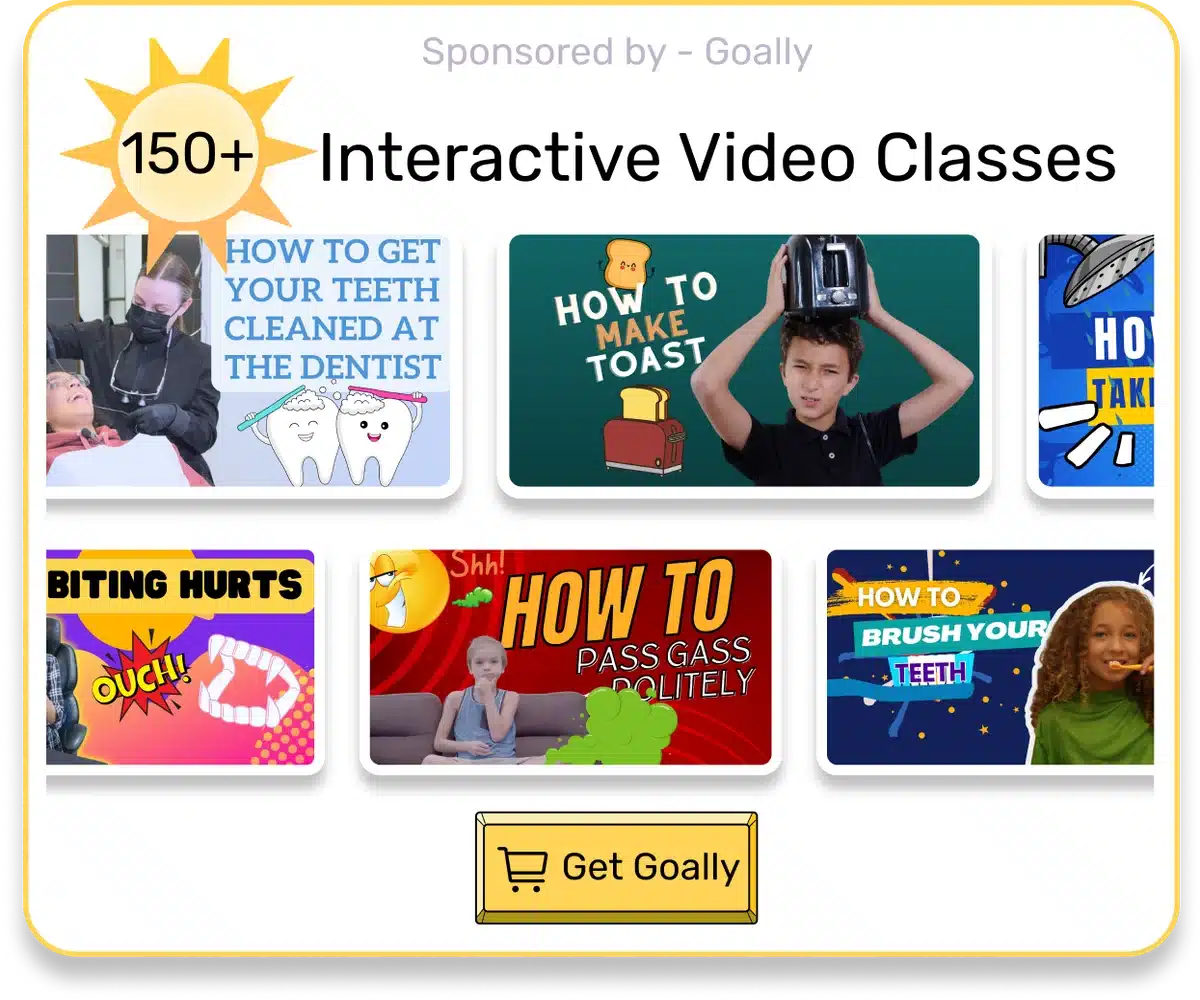Attention everyone! Did you know that a whopping 40 percent of kids with autism are nonverbal? But don’t worry, because we’ve got some groundbreaking news for you! Our team of experts has put together an exciting list of classroom activities that are perfect for helping nonverbal autistic children develop important skills like critical thinking and communication, all while having a blast with their classmates.
Table of Contents
"Goally works for our 13 year old ASD/ADHD son. It changed our lives for the better. He can now independently get ready for school and ready for bed. He loves the games and rewards features. Nothing else worked until Goally" — Jessica M Learn more →
List of Classroom Activities
| Classroom Activities | Description |
|---|---|
| Sensory Bins | Offers a calming, repetitive activity to engage kids and can help provide soothing or distracting sensory input. |
| Sensory Break Cards | Help manage frustration while also promoting physical activity. |
| Sensory Play Stations | Helps develop motor skills, encourages exploration, and helps reduce anxiety. |
| Play Dough | A tactile activity that provides calming sensory input and aids fine motor skills and hand-eye coordination. |
| Calm Down Corner Technique | A designated area within the classroom where an autistic child can de-stress and regain composure. |
| Water Play | A language-free activity involving splashing and laughter that emphasizes shared enjoyment. |
| Gardening Therapy | An activity that promotes physical skills, fine motor skills, and creativity. Activities like digging, weeding, and watering enhance motor skills. |
1. Visual storytelling
Visual storytelling is an excellent activity for nonverbal autistic children, as it allows them to express themselves without the need for spoken language. Kids with nonverbal autism can have difficulty communicating desires with others. Participating in classroom activities that involve augmentative and alternative communication (AAC) can greatly benefit both you and the child you’re teaching. Here are some ways to incorporate visual storytelling in the classroom:
- Cue cards: Using cue cards helps nonverbal children associate routines and behaviors with images so they take action on their own and communicate their needs. It’s best to keep the cards with you wherever you go with the child so they’re accessible when you want to communicate non-verbally. Try using our free printable cue cards from Goally to get started!!
- Storyboards: Create storyboards using images, symbols, or drawings. Your child can use these boards to tell a story or communicate their thoughts and feelings.
- Digital apps: Goally offers a range of apps, including one of the best language learning apps for kids that can be used for visual storytelling, such as creating social stories or visual schedules. These apps can help your child better understand and navigate their daily routines and experiences.
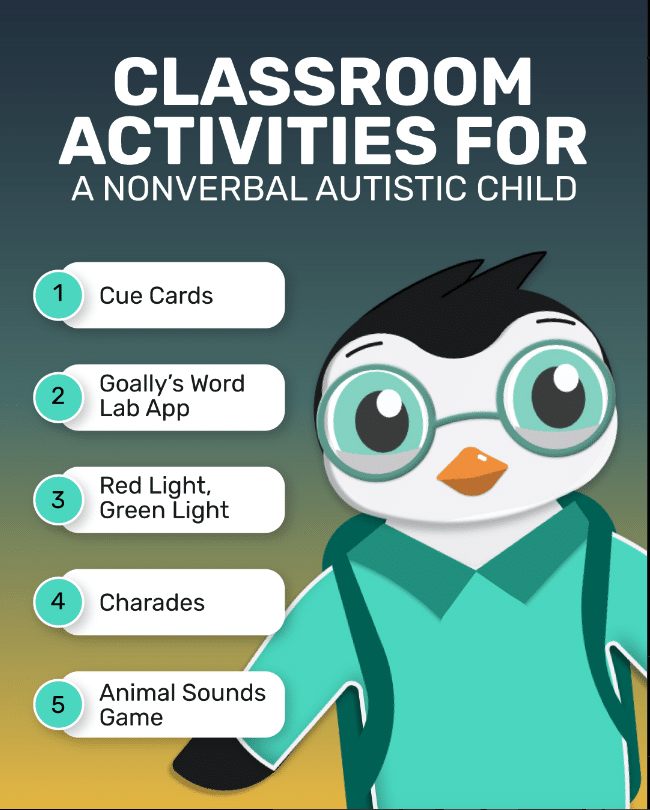
See on Instagram
2. Interactive Technology
Incorporating technology into classroom activities for nonverbal autistic children can be highly engaging and educational. Goally’s learning tablet and apps are specifically designed for kids with special needs, offering a range of features that can be incorporated into various activities. Some examples include:
- Goally’s AAC App: Goally’s AAC (Augmentative and Alternative Communication) app is a powerful tool designed to help nonverbal autistic children express themselves using symbols, images, or text-to-speech technology. This user-friendly app promotes effective communication, fosters independence, and boosts self-confidence in neurodivergent kids.
- Goally’s Word Lab App: The goal of Word Lab is teach children core language and to use an AAC device. It’s a gamified learning experience that uses videos to model the pronunciation of core words in real-life scenarios. Kids learn speech patterns and rules with repetitive interactive practices. When they’ve mastered a set of core words, parents can easily change the vocab through the parent app and track their progress. The opportunity for growth is endless as it can be customized to fit any child’s needs.
- Goally’s Game Garage: This app offers a curated selection of engaging and educational games tailored to the unique needs of neurodivergent kids. This app not only provides a fun and interactive learning experience but also helps develop essential skills such as problem-solving, memory, and time management skills. Use Game Garage to encourage kids to stay on task & manage screen time.
Goally | The Safest Tablet for Kids

Read more: Best Sensory Bin Ideas for Autism
3. Music and Movement
Music and movement activities can be highly beneficial for kids with thinking and learning differences. These activities can help improve motor skills, coordination, and self-expression. Here are some ideas to get your kid moving and grooving:
- Playing instruments: Provide a variety of instruments, such as drums, shakers, and xylophones. Encourage your child to explore different sounds and rhythms.
- Dancing: Play various types of music and encourage your child to move and dance along. You can also use Goally’s visual timer to set specific durations for dancing, ensuring a structured and enjoyable experience.
- Musical games: Play games like freeze dance or musical chairs, adapting them to suit your child’s abilities. Remember to use visual cues and gestures to help your child understand the rules and expectations.
- Animal Sounds Game: Each participant will need to take turns pulling an animal out of the hat or the bag. They’ll then need to make the sound that this animal makes. Invite other players to guess what animal makes this particular sound. This is a great activity for nonverbal children because it encourages speech development.
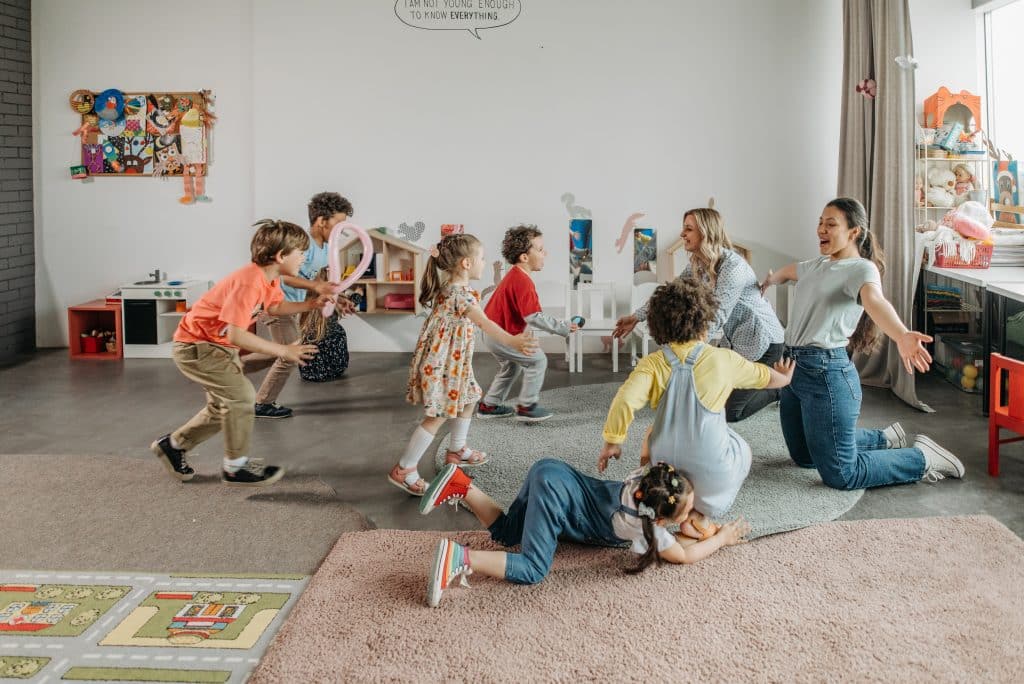
Read more: The Best Toys for Nonverbal Autism by Age Group
4. Art and Craft Projects
Art and craft projects are a fantastic way for nonverbal autistic kids to express themselves creatively. These activities can also help improve fine motor skills and focus. Consider trying these projects in the classroom:
- Painting: Provide a variety of paints, brushes, and paper for your child to explore. Encourage them to experiment with colors, shapes, and textures.
- Collage: Collect a range of materials, such as magazines, fabric scraps, and stickers, for your child to create a collage. This activity can help develop their decision-making and problem-solving skills.
- Clay modeling: Offer non-toxic clay or playdough for your child to mold and shape. Encourage them to create objects, animals, or even self-portraits.
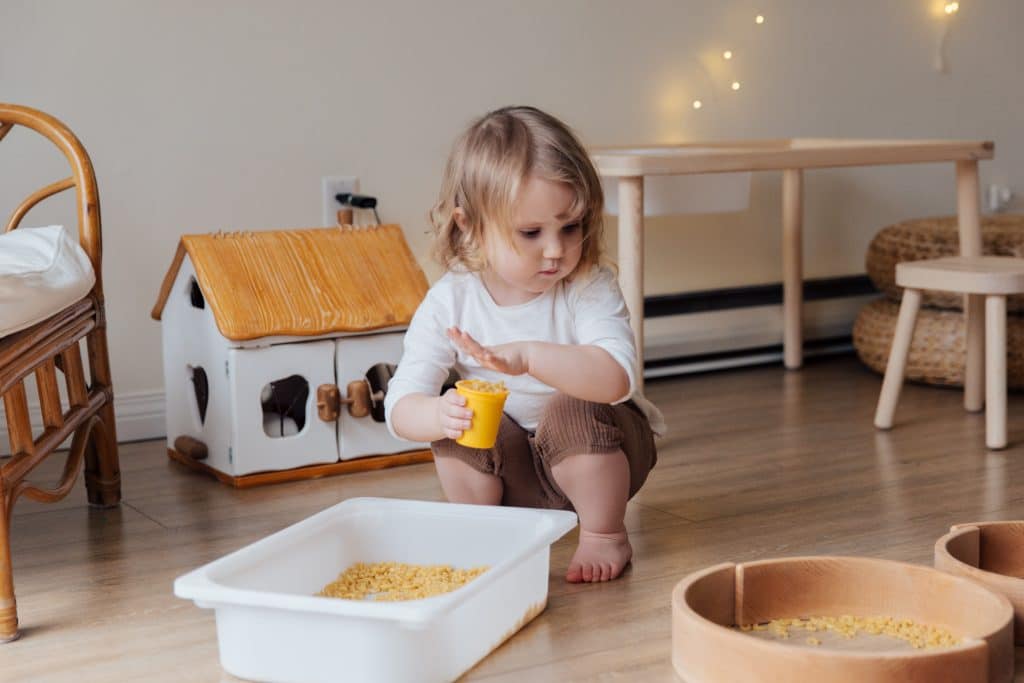
Read more: Can My Child With Nonverbal Autism Understand Me?
5. Sensory Play Stations
Sensory play stations are a fantastic way to engage nonverbal autistic kids, as they help develop motor skills, encourage exploration, and reduce anxiety. To create a sensory-rich environment, consider setting up the following stations:
- Water play: Fill a tub with water and add toys, cups, and spoons for scooping and pouring. If your child gets nervous around water (autism & showering can be difficult!), you can create a routine on Goally that will help them know what to expect— and to show them it will be FUN!
- Sand play: Create a sandbox with various toys for digging and molding. Add a sensory twist by using colored sand or hiding small objects for your child to discover.
- Textured materials: Provide a variety of materials with different textures, such as fabrics, foam, and bubble wrap. Encourage your child to explore and describe the textures using nonverbal communication.
Read more: What Makes Autism and Showering So Challenging?
Goally in the Classroom
Goally is a great tool for kids with ASD who are looking to improve their life and language skills. It can be used in the home or clinic, and it is tailored to the individual needs of each child. Goally is a digital therapy and teaching assistant that can help kiddos with autism spectrum disorder (ASD). Goally can help children with a variety of tasks, including:
- Learning New Skills: Goally’s video classes helps children learn new skills, such as: how to follow directions, how to interact with peers, and how to make a sandwich.
- Increased Communication: Goally helps children effectively communicate wants and needs while also teaching them their first 50 words, allowing children to participate in the world around them.
- Behavior Management: Goally helps children manage their behavior, both in the classroom and at home by rewarding positive behaviors created by parents and teachers.
Goally’s distraction-free kid’s tablet can be used as a therapy tool to help teach executive function, language, emotional regulation, finger dexterity skills, and more!
Finding engaging classroom activities for a nonverbal autistic child can be challenging, but with a bit of creativity and adaptability, you can create an inclusive and stimulating learning environment. By incorporating sensory play, visual storytelling, music and movement, art and craft projects, interactive technology, and group activities, you’ll not only help your child learn and grow but also foster a sense of belonging and self-confidence. And with the help of Goally’s learning tablet and apps, you can further enhance these activities and support your neurodivergent child’s learning journey.
This post was originally published on 10/25/2022. It was updated on 01/04/2024.
Emily is a seasoned blog writer for Goally, leveraging her extensive background in child psychology and special education to provide valuable insights and resources for parents. Her commitment to understanding and addressing the unique needs of these children, combined with her expertise in educational strategies, makes her a credible and empathetic voice for families.
